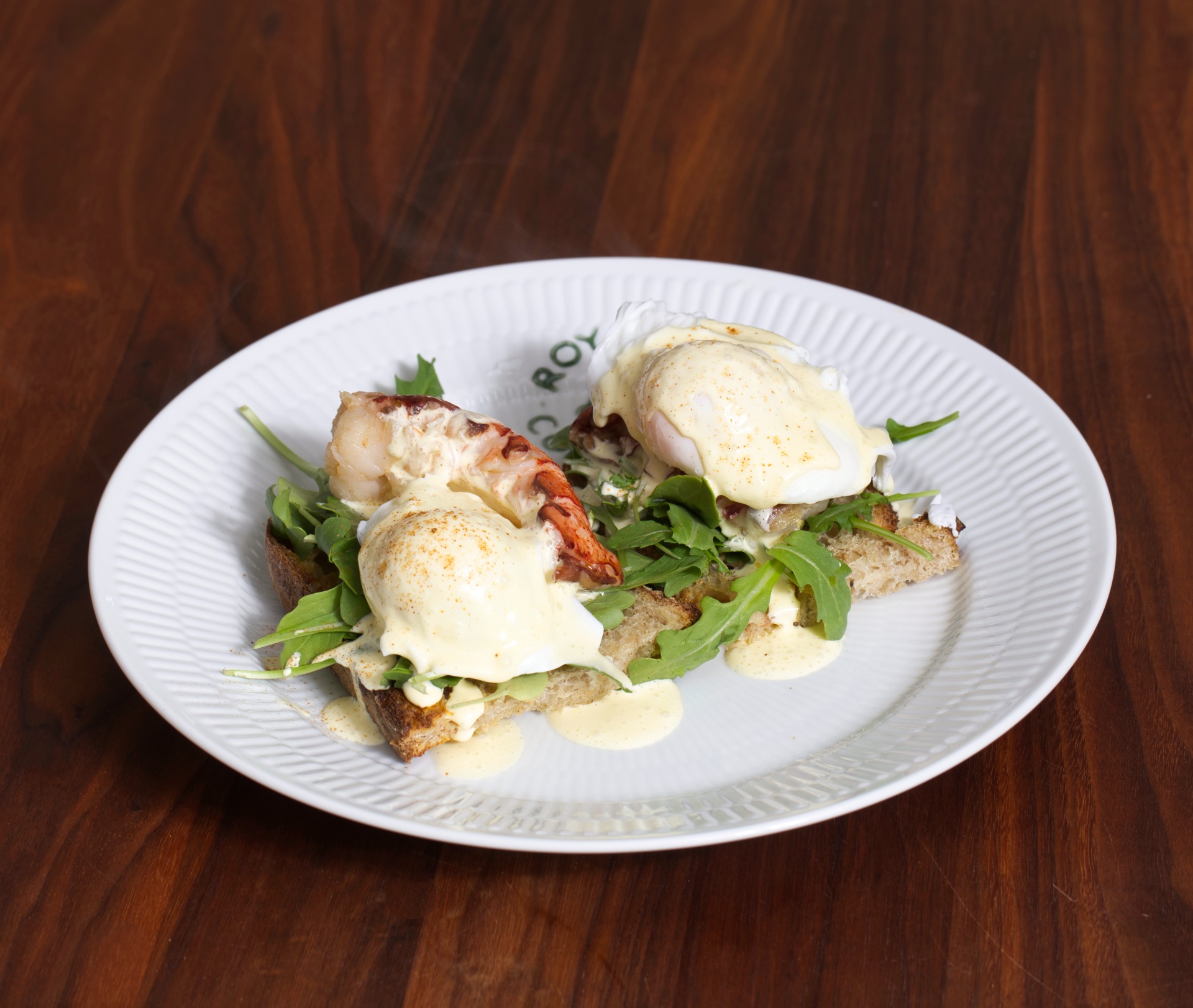Lobster Benedict- Sous Vide
Lobsters are a creature with a delicate taste and texture. So by poaching it in butter, you get the purest and cleanest lobster taste ever. Making it Sous Vide you are getting the perfect texture to your liking. The temperature is controlling the texture. Well time is too, but by poaching the lobster for 45-60 minutes, temperature is the controlling factor.
Different cooks choose different poaching temperature. Thomas Keller calls for 139℉ (59℃) and Modernist Cuisine calls for 115℉ (46℃).
Serious Eats tested different temperature, and this were their finings:
Temperature - texture
120℉ (49℃) - Soft and translucent
130℉ (54℃) - Tender and succulent
140℉ (69℃) - Firm
I decided to go with 135℉ (57℃) and the result was fantastic, I got a tender and somewhat firm juicy lobster. This one is a winner.
Serves 2.
Ingredients:
Butter poached lobster tail:
4 lobster tails, shells removed and deveined
113 g salted butter (1 stick butter)
sprinkle of salt
Benedict:
hollandaise sauce*
arugula
4 half slices toasted bread
Hollandaise in blender:
250 g salted butter, clarified
4 egg yolks
¼ teaspoon salt
¼ teaspoon ground white pepper
½ lemon, the juice from
1 pinch cayenne
Directions:
Butter poached lobster tail:
Set you sous vide to 135℉ (57℃).
Place the lobster tails and butter in a vacuum sealer bag, sealing with the moist setting. Place the bag in the water bath, making sure that the lobster is fully submerged. Set timer for 50 minutes.
Remove lobster tails from the bag, discarding the liquid, when it is time to serve your benedict.
Hollandaise:
Melt the butter in a sauce pan over very low heat. Let simmer gently until the foam rises to the top of the melted butter. Once the butter stops spluttering, and no more foam seems to be rising to the surface, remove from heat and skim off the foam with a spoon. The foam is the milk solids from the butter. Ladle the butterfat into another saucepan leaving the water and residue behind. You can also pour the butterfat through some cheesecloth. Keep the butterfat warm.
The clarified butter should be about 172℉ (77℃).
Add the rest of the ingredients, except cayenne, in a blender. Blend until foaming. With the blender running add ⅓ of the butter in a slow steady stream, yes it will splatter. Once it emulsifies, turn the blender speed up to high and add the remaining butter. Season with salt and pepper and blend for another second. Sprinkle the cayenne on top when serving.
* Instead of regular hollandaise sauce, you can use the more healthier avocado hollandaise
Benedict:
Toast the bread, place a handfull arugula on it, placing a lobster tail and a poached egg on top. Ladle a spoonful warm hollandaise over, sprinkling with some cayenne.
Serve immediately.
Enjoy!





